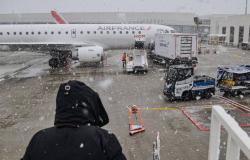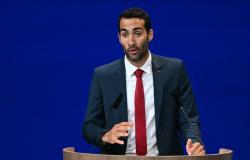Negotiations for a ceasefire between Israel and Hezbollah come after weeks of violence that ravaged southern Lebanon and the capital Beirut. The clashes left behind a procession of dead, injured and civilian populations displaced in precarious conditions.
If discussions are moving forward to end this war, this dynamic contrasts with the absence of similar efforts for Gaza, where Israel continues a devastating offensive without a comparable truce being seriously considered. After weeks of military escalation between Israel and Hezbollah, advanced diplomatic solutions seem to be emerging. Israeli and US officials are hinting that a ceasefire agreement could be approved soon, although the White House has not yet confirmed a final agreement.
Diplomatic breakthrough, uncertainties and precarious balance
This plan, mediated in particular by the American envoy Amos Hochstein, aims to establish a 60-day truce to allow a withdrawal of Israeli troops from South Lebanon and the redeployment of the Lebanese armed forces, supported by UNIFIL. Israel, however, insists on its right to self-defense in the event of a violation by Hezbollah, a requirement that worries Beirut, fearing an attack on its sovereignty.
At the same time, the creation of an international supervisory committee, led by the United States, is fueling tensions, particularly over its composition and role. These provisions, although ambitious, seem very fragile given the complexity of the terrain.
As for official Lebanon, “or what remains of it,” it is condemned to recognize the impasse in which Hezbollah has placed it. Especially since Netanyahu maintains the pressure and shows no desire to compromise. This will remain the case according to Israel until Hezbollah’s military apparatus is completely destroyed and the official Lebanese authorities say they are ready, with the army, to fully assume their responsibilities.
This would require a few more weeks which would bring the date of installation of the new administration closer. Netanyahu fears that Biden will impose sanctions on Israel (arms embargo or even revenge against Netanyahu for “bad behavior”…) before his departure from the White House.
Logic would have it that if each side wants a ceasefire in Lebanon, there is no desire to wait for Donald Trump’s inauguration in January. But, well, it has become a different situation today after the American elections. The agreement under discussion provides for several measures. Notably, the creation of an international supervisory committee led by the United States, with the participation of France and possibly other actors such as the United Kingdom and Germany. Israel demands freedom of movement in South Lebanon and the right to retaliate in the event of violations by Hezbollah, which Lebanon disputes and considers a threat to its sovereignty. These differences complicate the negotiations and pose challenges to the implementation of the agreement.
On the ground, clashes continue, with Israeli advances in southern Lebanon, where the army is seeking to establish a buffer zone to prevent Hezbollah rocket fire. The latter, supported by Iran, continues to retaliate, but its influence on the ground seems to be diminishing in the face of Israeli military superiority. This dynamic of escalation threatens to undermine diplomatic efforts, with each side seeking to strengthen its position before any agreement.
War on regional dimensions : the name of Gaza between impasse and hypocrisy
This crisis highlights broader tensions, including rivalries between Israel and Iran, as well as the American political calendar, marked by the approach of the transition between the Biden and Trump administrations. Emissary Amos Hochstein, pressed by these constraints, plays a key role in trying to finalize an agreement. However, the instability of the terrain and the divergent interests of the parties are causing the outcome of these talks to be uncertain, raising the specter of a protracted regional war.
While South Lebanon is at the heart of discussions, the situation in Gaza remains in the shadows. There, the civilian population is undergoing a real ordeal, with incessant bombings and a total absence of diplomatic initiatives for a ceasefire. This “double standard” raises questions about the international desire to put an end to the suffering of the Palestinians. In Israel, the strategy seems clear: neutralize Hezbollah while continuing a relentless war against Gaza, at the cost of thousands of innocent lives.
The war between Israel and Hezbollah is not just a bilateral conflict, it reflects regional tensions fueled by political agendas and strategic rivalries. While American envoy Amos Hochstein is accelerating his efforts for a truce in Lebanon, no similar approach is planned for Gaza, where the status quo amounts to a moral abdication of the international community. This difference in treatment exposes the hypocrisy of world powers, ready to preserve certain regional balances while turning a blind eye to a total war against the Palestinians.






